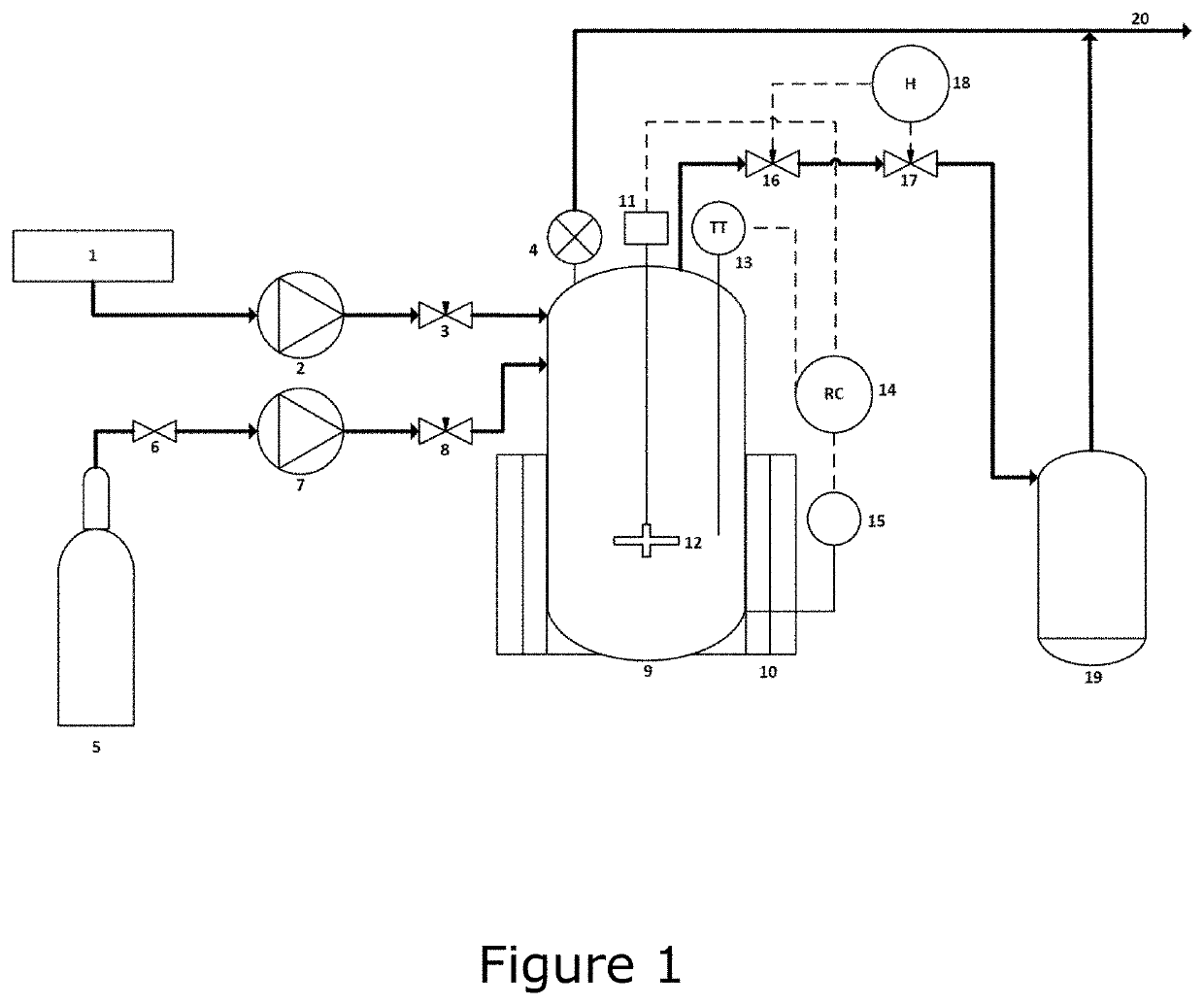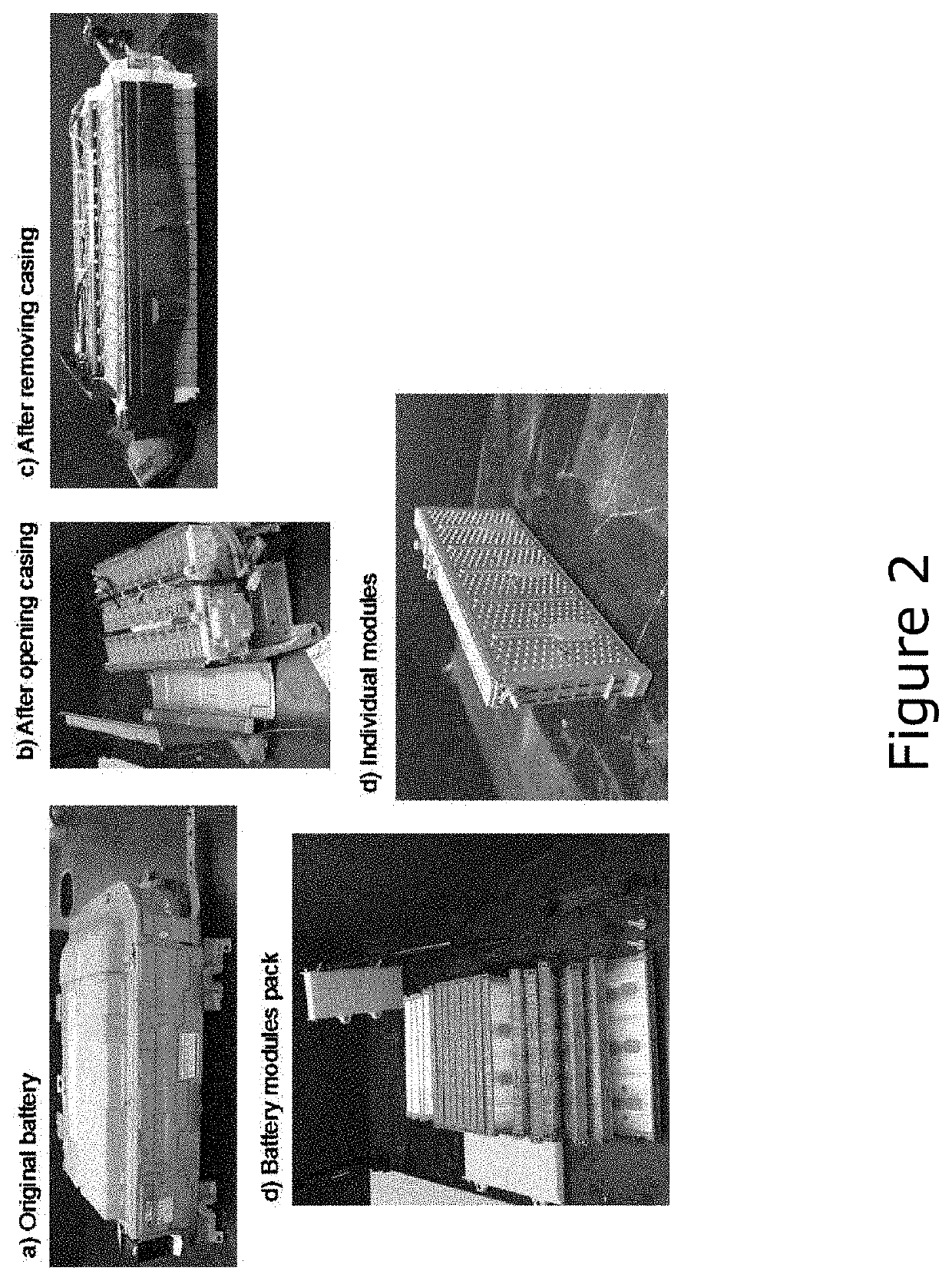Method and system for supercritical fluid extraction of metal
a supercritical fluid and metal technology, applied in the field of metal extraction, can solve the problems of limiting the ability to determine the size and geometry of the reactor, scfe-related problems, and difficulty in process design and economic evaluation
- Summary
- Abstract
- Description
- Claims
- Application Information
AI Technical Summary
Benefits of technology
Problems solved by technology
Method used
Image
Examples
embodiment 1
Conclusions from Preferred Embodiment 1
[0120]Preferred Embodiment 1 provides an environmental friendly SCFE process to extract REEs from postconsumer NiMH batteries. The effect of several operating parameters, including temperature, pressure, residence time, sample to chelating agent ratio, agitation rate, complex chemistry, and co-solvent (methanol) addition, on the REE extraction efficiency was investigated, and 35° C., 31 MPa, 2 h residence time, S:CA ratio of 1:10, TBP(HNO3)1.745(H2O)0.52 chelating agent with 2 mol % methanol addition were determined to be some of the preferred conditions for this embodiment, resulting in 86% La, 86% Ce, 88% Pr, and 90% Nd recovery.
[0121]Potential options to further increase the extraction efficiency include increasing pressure and / or residence time, decreasing S:CA ratio, and increasing methanol concentration. Furthermore, a synthetic anode material was prepared and processed utilizing pure REOs, which resulted in similar or lower REE extractio...
embodiment 2
Conclusions from Preferred Embodiment 2
[0165]An environmentally friendly process utilizing sc-CO2 as the solvent along with TBP-HNO3 chelating agent and methanol as co-solvent was developed to extract Nd, Dy, and Pr from end-of-life NdFeB magnet. This process utilizes minimum amount of organic solvents; thus, it generates minimum amount of waste. A fractional factorial experimental design methodology was utilized to investigate the effect of seven operating parameters, resulting in 94% Nd, 94-100% Dy, and 87-94% Pr extraction with only 57-67% Fe co-extraction. An economic analysis of a full-scale industrialized iteration of this process was performed. The results indicated the process can be economically viable with a break-even processing rate of 30 kg of magnet per hour, given a final product REE purity of >99 wt % and 2 to the supercritical state, and the compression cost to liquefy gaseous CO2 remaining after the depressurization stage to allow for storage.
[0166]With respect to ...
embodiment 3
Experimental Section for Preferred Embodiment 3
[0183]The feasibility of the supercritical fluid extraction of rare earth elements, strontium (Sr), and antimony (Sb) was assessed in a series of extraction trials. The feedstock for these trials was pre-separated fluorescent lightbulb (FL) luminescent material from a fluorescent lamp recycling facility.
[0184]Characterization of FL luminescent material. Prior to extraction trials, the physical and chemical characteristics of the starting luminescent material were characterized. The starting material was a powder corresponding to the inner coating of end-of-life FLs. The particle size distribution was determined by laser particle size analysis, shown in FIG. 19. A trimodal distribution was observed, corresponding to three different types of particles. Particles with a diameter larger than 75 μm were removed by sieving, as they correspond primarily to silica particles, which do not contain the target elements.
[0185]The chemical compositio...
PUM
| Property | Measurement | Unit |
|---|---|---|
| temperature | aaaaa | aaaaa |
| pressure | aaaaa | aaaaa |
| residence time | aaaaa | aaaaa |
Abstract
Description
Claims
Application Information
 Login to View More
Login to View More - R&D
- Intellectual Property
- Life Sciences
- Materials
- Tech Scout
- Unparalleled Data Quality
- Higher Quality Content
- 60% Fewer Hallucinations
Browse by: Latest US Patents, China's latest patents, Technical Efficacy Thesaurus, Application Domain, Technology Topic, Popular Technical Reports.
© 2025 PatSnap. All rights reserved.Legal|Privacy policy|Modern Slavery Act Transparency Statement|Sitemap|About US| Contact US: help@patsnap.com



